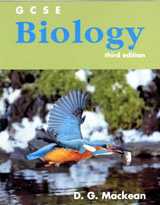Introduction to Tilapia
Tilapia is a genus of fish in the cichlid (pronounced ‘sishlid’) family. These freshwater fish are native to Africa but have been widely introduced to warm waters in many countries. Their natural habitat is lakes but they are now extensively bred and reared in fish farms.
In their breeding behaviour, the cichlids may be divided into two groups, the substrate spawners and the mouth brooders. The former lay eggs in a pit dug in the bottom of the lake or pond. The eggs are aerated and guarded by the parents.
The mouth brooders, on the other hand, may lay their eggs in pits, but then take them up into the mouth and keep them there till the young hatch.
Cichlids normally swim together in groups called schools. As individuals become sexually mature, distinctive markings or colours are developed, e.g. Tilapia natalensis goes darker, T. macrocephala males develop a bright yellow operculum. The mature males then leave the school and each establishes a territory on the bottom of the pond. The male defends this territory against all intruders, but most vigorously against mature males of his own species. The defence consists of a display in which the median fins are erected and the floor of the mouth expanded. This may be followed by tail-flicking, in which jets of water are directed against the lateral line of the intruder; butting, by swimming with mouth open against the flanks of the opponent, and finally by pursuit with nipping when the rival male flees.
If a female enters the territory, she may be attacked in the same way but when she fails to respond, the male changes his behaviour pattern to a slow, swimming movement, with body tilted downwards, leading her towards the pit he has dug There may follow a courtship pattern, which varies very much with the species, but often consists of quivering movements or swimming round and round in the nest-pit, while the male butts at the protruding genital tube of the female.
Such an elaborate behaviour pattern ensures that sperms are shed at the moment that eggs are laid, thus increasing the chances of fertilization. In the substrate spawners, the eggs are laid singly and they at once stick to the pebbles or sand in the nest pit. With each batch of ten or more eggs, the male swims over them, shedding sperms, and so fertilizes them. From 50 to 700 eggs may be laid according to the age and size of the female. In many species, both parents remain at the nest.
During this time, one of them will guard the nest by driving off intruders, expel debris which falls into the pit and remove infertile eggs which might become a source of fungal infection. The parent also aerates the eggs by creating a current of water with its fins.
After a few days, the young hatch and may be taken up in the parent's mouth to be transferred to a different pit. Here the young fish stick to the substrate by a pair of mucous glands on the head while they use up the yolk remaining from the egg. If they try to leave the nest singly, the parent snaps them up and spits them back into the pit, but eventually they all leave the nest together, swimming as a school and following the parent for a week or more before they become independent.
In the mouth brooders, the courtship pattern is followed by spawning in which the female lays perhaps hundreds of eggs in the nest and these are immediately taken up into the mouth. The male sheds sperms over the eggs or over the place where they were laid and the female takes this up too, so that fertilization will occur in the mouth. The female is then chased away by the male who may at once start courting other mature females. For about ten to twelve days the female carries a mouthful of eggs or young fish. The breathing movements are restricted and feeding is not attempted. If the young fish swim out of the mouth they are snapped up again but after about ten days the mother ejects them in swarms. These swarms form a school and follow the mother. In some species the youngsters will return to the mouth if danger threatens; the mother "calls" them by swimming slowly backwards.
The accounts given above are based on observations in aquaria and are very generalized; in fact, there is considerable variation in behaviour between the species of cichlids, e.g. in some mouth brooders it is the male which carries the eggs and young, and certain species do not dig nests until after courtship and pair formation, when it may be the female who does most of the work.
The cichlids are mostly carnivorous, hunting about for food on the bottom or snapping up organisms floating in the water. Most species of Tilapia, however, feed on algae in plankton, though Tilapia zillii eats the stems and leaves of water plants. When swimming in schools, the fish usually move almost simultaneously and this tends to keep the school together.
Their responses can be identical; one such reaction is the rapid change of colour or pattern according to the ‘emotional’ state of the fish. This is brought about by the expansion or con- traction of special pigment-containing cells in the skin; e.g. during threat behaviour, dark, vertical bars appear on the flanks of the fish within seconds. Colour changes associated with sexual maturity, however, usually take a period of days.
For illustrations to accompany this article see Tilapia, Life-Cycle
| Search this site |
| Search the web |
© Copyright 2004 - 2018 D G Mackean & Ian Mackean. All rights reserved.



